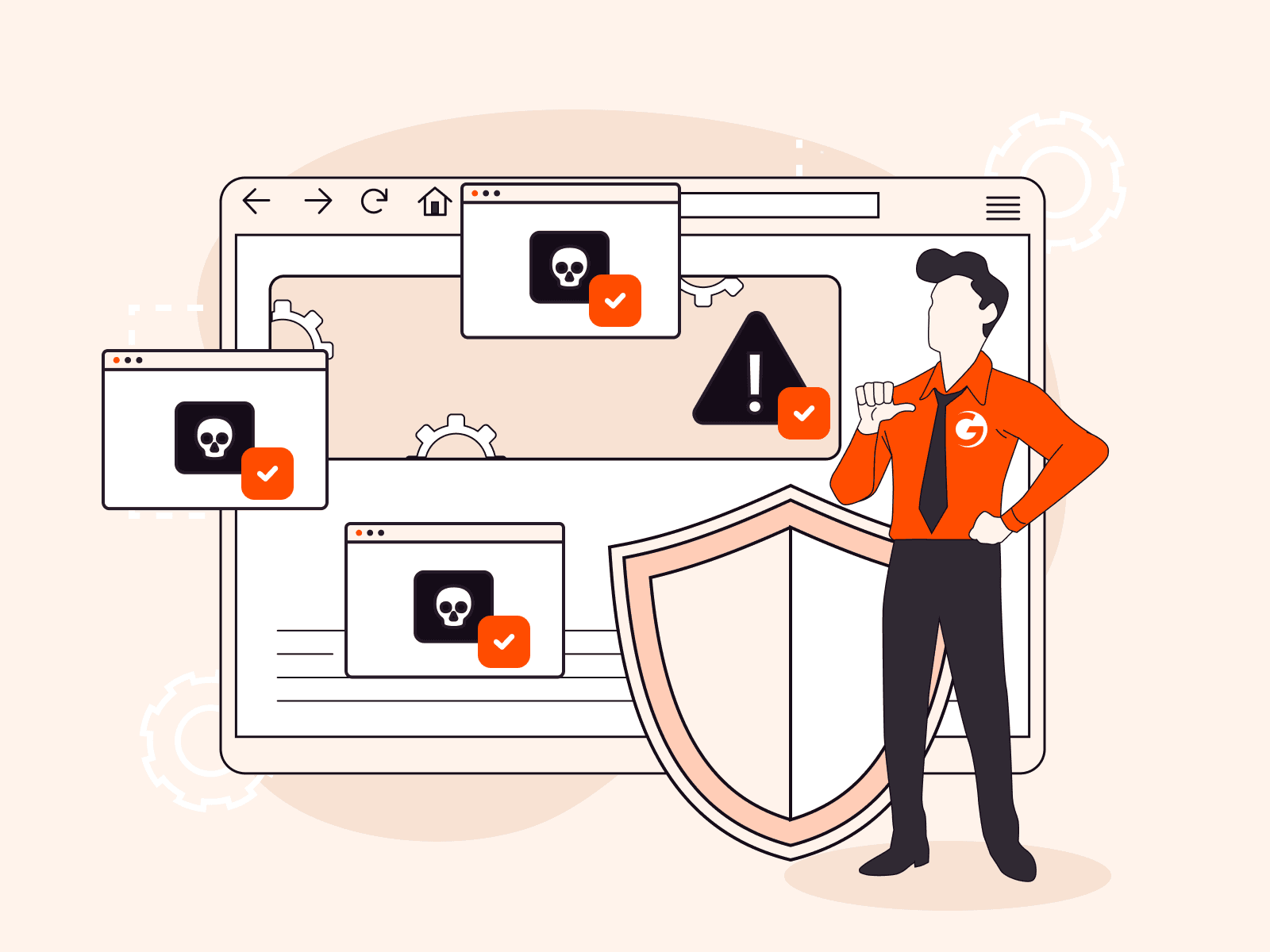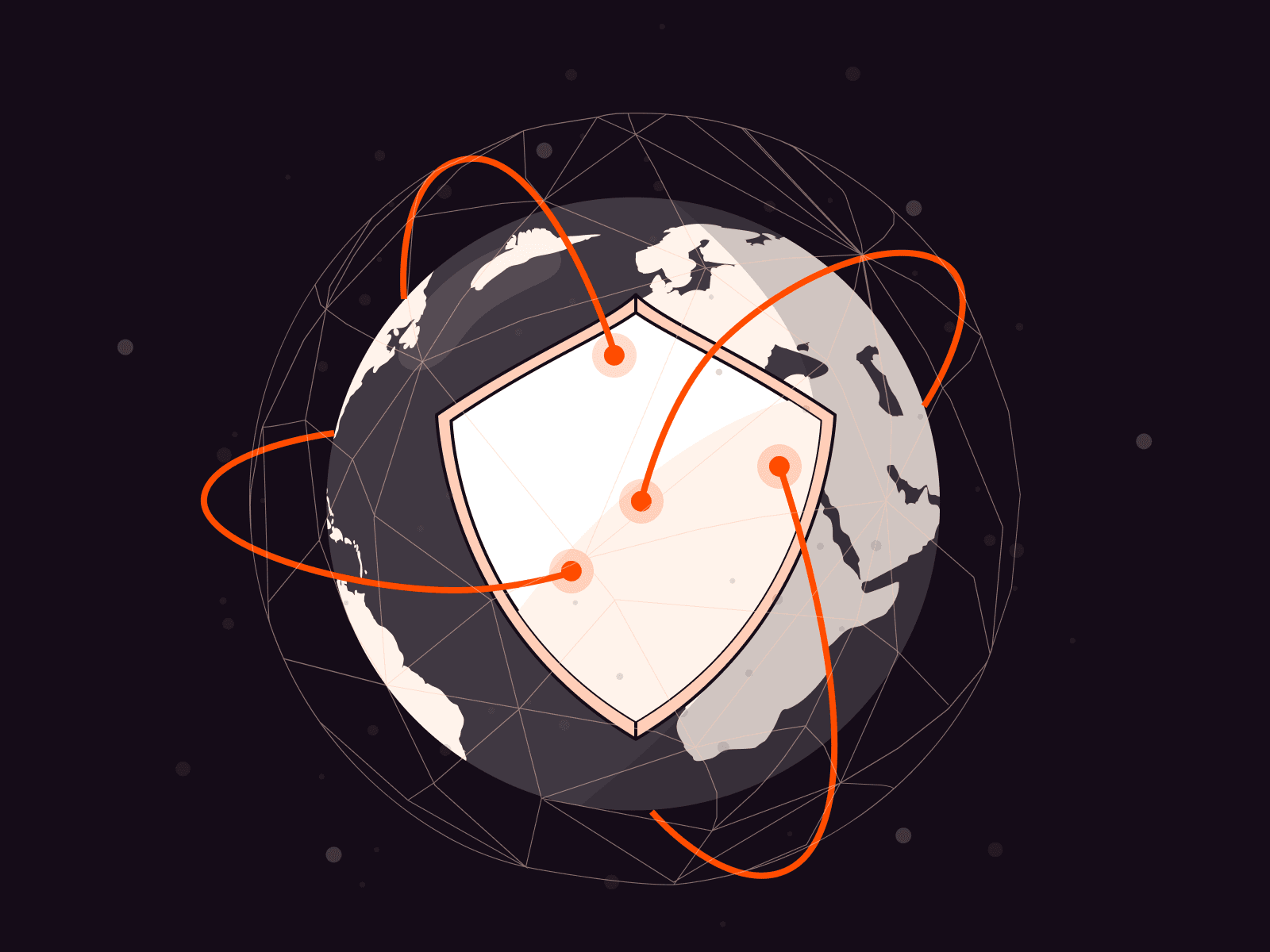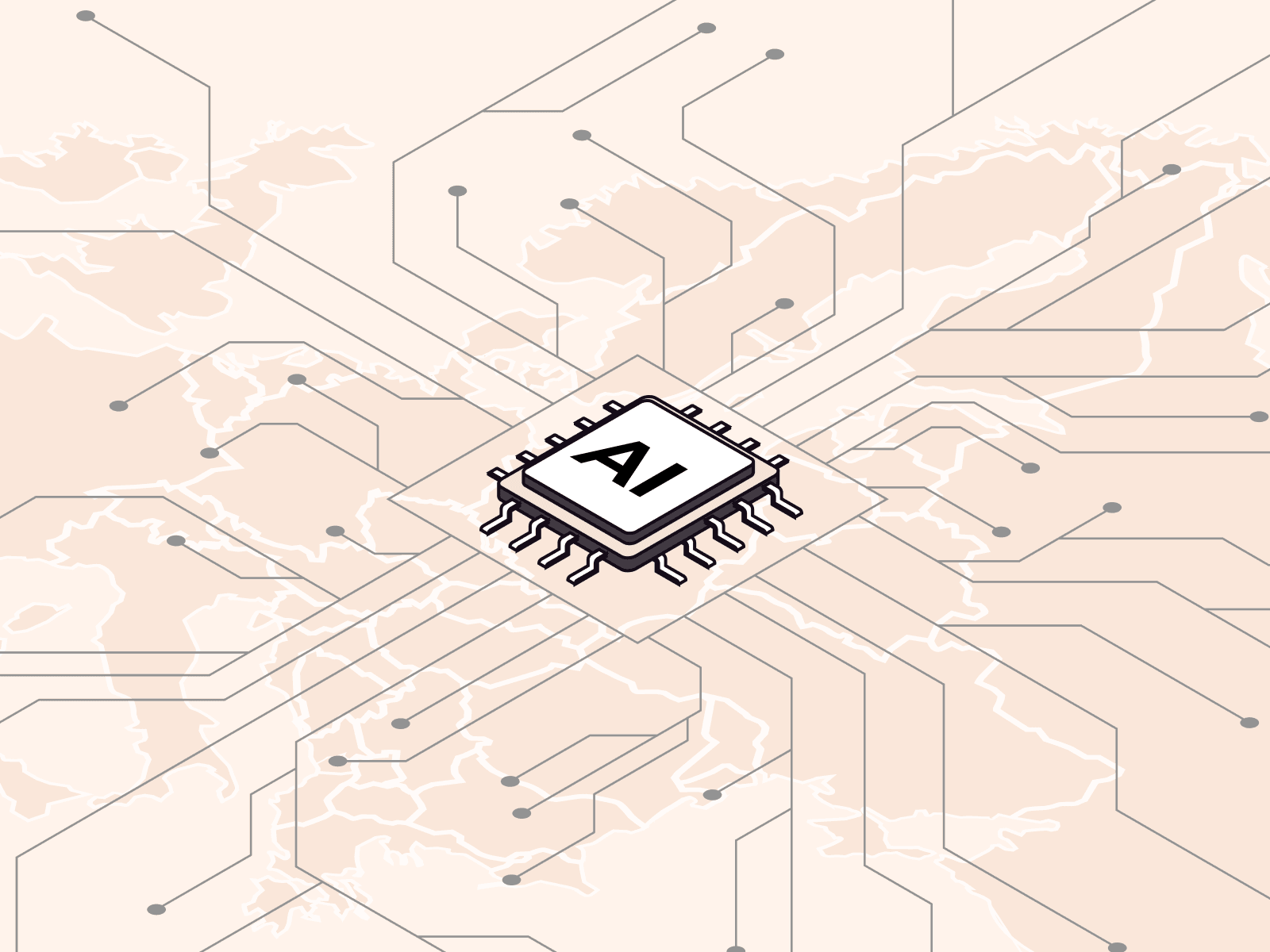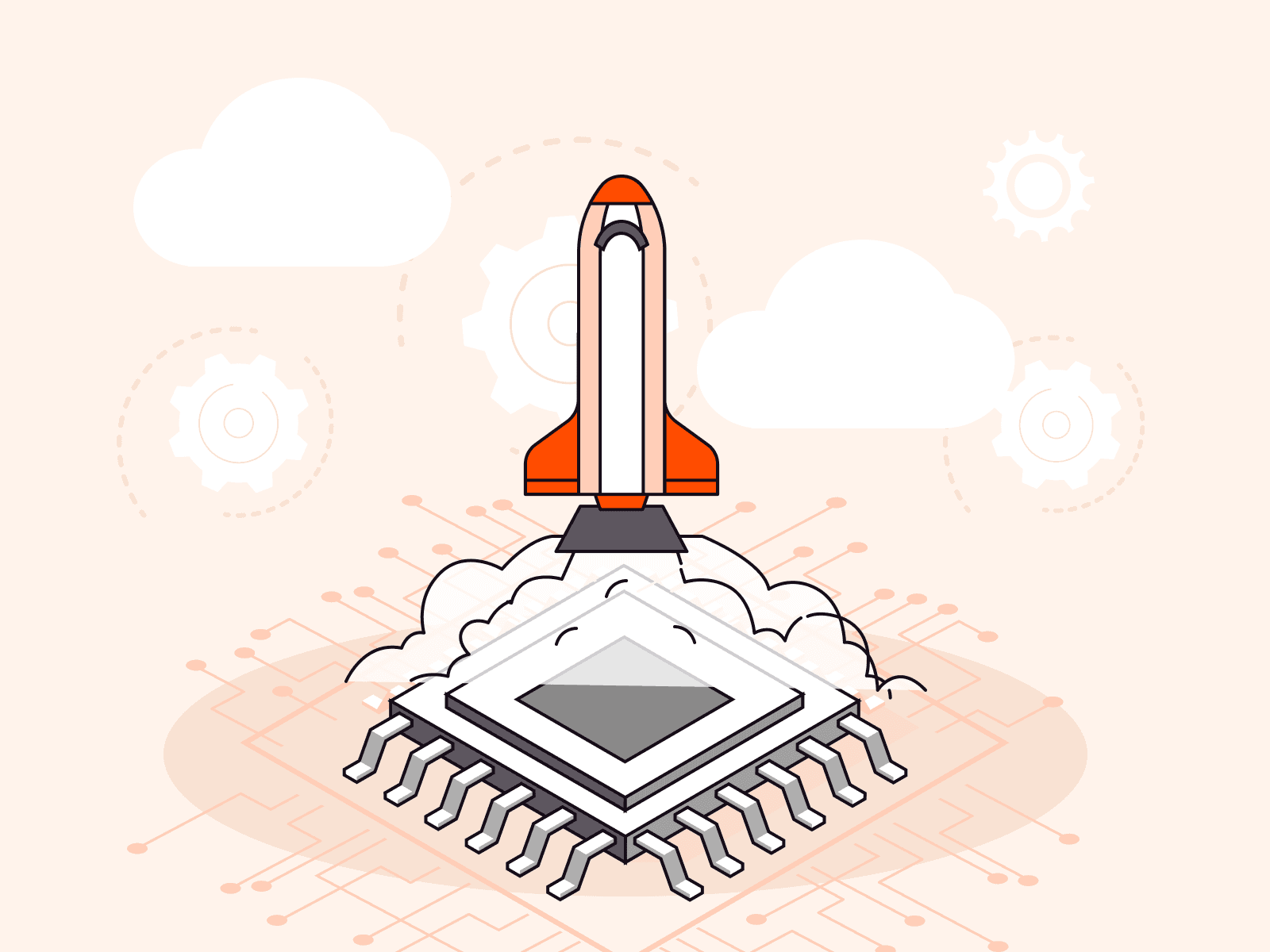Defending Against Layer 7 DDoS Attacks: Strategies and Solutions
- August 19, 2024
- 5 min read

Any organization with an online presence is at risk of experiencing a Layer 7 DDoS attack, from e-commerce platforms and financial institutions to social media and online services. Layer 7 (L7) DDoS attacks represent one of the most sophisticated threats in the digital landscape. These attacks target the application layer, aiming to disrupt the user interface and the end-user experience by overwhelming specific functions within an application. Unlike their Layer 3 and Layer 4 counterparts, which flood the network and transport layers with traffic, L7 attacks are more insidious, often mimicking legitimate user behavior to evade detection.
What Is a Layer 7 DDoS Attack?
Layer 7 DDoS attacks strike at the application layer, where web applications operate. Web applications manage tasks from content display and transaction processing to communication and data management, ranging from simple static websites to complex platforms like e-commerce sites, social media networks, online banking systems, and SaaS platforms.
Like all DDoS attacks, Layer 7 attacks work by sending a huge amount of traffic in order to affect the function of an online service—in this case, an application. But unlike traditional network-level attacks that inundate servers with traffic, L7 attacks exploit weaknesses in the application itself.
For example, attackers may take advantage of the mechanics of an e-commerce site by repeatedly searching for products, overloading the search functionality. Alternatively, attackers may exploit innocuous features such as a login page by continually submitting login attempts and exhausting server resources. By imitating normal user behavior, these attacks can overwhelm an application’s resources, such as memory, network capacity, and processing power, causing slowdowns or complete outages.
While the traffic volume in L7 attacks is significantly lower than in traditional Layer 3 or 4 attacks, they can be highly effective. By identifying requests that consume a lot of resources, attackers can launch low-volume attacks that still bring down the service. “Slow attacks”, like Slowloris and Slow HTTP, deplete server connection resources by sending partial requests, causing significant slowdowns or outages.
What Damage Can L7 DDoS Attacks Cause?
The consequences of a successful Layer 7 attack can be severe, ranging from diminished customer trust and financial losses to long-term damage to reputation and revenue.
These risks include:
- Service downtime: L7 attacks can cause prolonged disruptions by overloading specific application functions, such as checkout processes, and overwhelming application resources. Without WAAP, businesses are vulnerable to extended outages caused by attacks, Recent reports revealed that malicious web applications and API transactions rose by 171% in 2023, leaving the risk to online service providers higher than ever. Outages and service disruptions caused by L7 attacks can lead to lost sales, customer frustration, and a loss of customer trust.
- Data security risks: Layer 7 attacks, while primarily disruptive, can also serve as a cover for severe threats like data breaches. For instance, during an attack malicious actors may exploit vulnerabilities to access sensitive customer information. Without WAAP, sensitive information is at greater risk of exposure.
- Reputation damage: Frequent disruptions and poor user experiences caused by L7 attacks can tarnish a company’s reputation and reduce customer satisfaction, costing businesses up to $9000 per minute. Negative reviews and customer defections can have lasting effects on business growth and public perception.
- Customer expectations: Customers demand seamless and secure experiences. Failing to meet these expectations due to disruptions or data leaks caused by L7 attacks can erode trust and loyalty, leading to customer loss and reduced revenue.
The number of DDoS occurring in the first half of 2024 increased by 46% compared to the same period in the previous year, with industries such as financial services and banking being hit the hardest. The increase in DDoS attacks, specifically L7 attacks, means that understanding the potential consequences—and taking action to avoid being affected—is more critical than ever.
How WAAP Defends Against Layer 7 DDoS Attacks
Web Application and API Protection (WAAP) solutions are designed to counter the sophisticated nature of L7 DDoS attacks. In contrast to outdated security measures that may fall short, WAAP offers a multi-layered defense strategy. It combines features such as rate limiting, bot management, and intelligent traffic analysis to identify and mitigate malicious activities.
In addition, WAAPs offer the following:
- Advanced detection: WAAP uses sophisticated detection techniques to spot and isolate potential bad actors. Advanced WAAP solutions, such as Gcore WAAP, allow you to build a profile of bad actors and learn patterns, enhancing precision. By analyzing traffic patterns and employing machine learning, WAAP can differentiate between legitimate user traffic and malicious requests attempting to flood the system as part of an L7 DDoS attack. Genuine traffic reaches your application unaffected, while malicious traffic is blocked.
- Effective mitigation: When a threat is detected, a WAAP quickly acts to mitigate it. Gcore WAAP uses AI and machine learning to apply targeted challenges like CAPTCHA to suspicious traffic. This approach ensures that only real users can access the application while preventing malicious bots used to execute L7 attacks from reaching applications.
- Continuous improvement: Advanced WAAP solutions continually learn from each attack and enhance defenses to stay ahead of evolving threats such as L7 attacks. This dynamic adaptation helps protect against new and increasingly complex L7 attack methods, from malicious bots to human attackers taking advantage of system vulnerabilities.
But Aren’t There Other Ways to Stop L7 Attacks?
Technically, yes! Other solutions besides WAAP can also play a role in stopping these attacks. But unfortunately, traditional methods tend to fall short when faced with sophisticated Layer 7 DDoS attacks.
Content delivery networks (CDNs) can help distribute traffic and mitigate some DDoS attacks by distributing and balancing traffic across a larger network. But they’re not specifically designed for application-layer protection. Firewalls and Intrusion Prevention Systems (IPS) provide basic protection but can be ineffective against advanced Layer 7 attacks. For comprehensive security, a solution integrating WAAP with specialized DDoS protection, such as Gcore WAAP, is essential.
Without a strong WAAP solution, organizations are vulnerable to the full impact of L7 DDoS attacks. The consequences, as we discussed above, can be severe.
Integrated Security Solutions from Gcore
We are a leader in providing integrated security solutions, combining WAAP and DDoS protection to offer comprehensive coverage. Gcore DDoS Protection targets various DDoS attack vectors, including network and transport layers. It features real-time traffic analysis, high-capacity filtering, and immediate mitigation to neutralize threats before they affect service.
Our security solutions employ advanced AI and machine learning to enhance threat detection and response. By building detailed profiles of regular users and distinguishing between malicious and legitimate traffic, we minimize false positives and prevent legitimate users from being blocked while preventing both human and machine attackers from reaching the application. This approach allows the system to apply specific challenges only to suspected threats, ensuring that genuine users experience minimal disruption.
By focusing on user behavior analysis and real-time adaptation, our solution stops bad actors precisely, meaning that legitimate users retain normal access. This maintains high performance while defending against complex Layer 7 attacks. This capability is crucial in a landscape where threats are continuously evolving and attackers employ increasingly sophisticated tactics.
By integrating WAAP with DDoS protection, we provide a multi-layered defense strategy focused on protecting against sophisticated Layer 7 attacks. Whether dealing with high-volume Layer 3 and 4 attacks or sophisticated Layer 7 threats, we provide solutions that deliver seamless and effective protection. This synergy ensures that all potential vulnerabilities are covered, offering peace of mind to enterprise customers.
Beyond Traditional Security Solutions
As cyber threats evolve, relying solely on traditional security measures is no longer sufficient. WAAP solutions are essential for safeguarding web applications and APIs. Our approach, combining WAAP with advanced DDoS protection, offers a comprehensive defense strategy that covers both application-level and network-level threats.
Learn more about how we can enhance your cybersecurity strategy with leading Gcore WAAP and DDoS protection solutions.
Related articles
Subscribe to our newsletter
Get the latest industry trends, exclusive insights, and Gcore updates delivered straight to your inbox.






